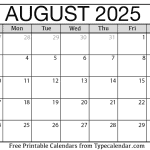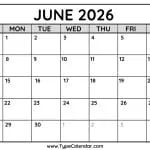Easter, also called Resurrection Day, is a holiday among Christians which is a celebration of Jesus Christ returning from the dead. Christians believe that it is the holiest day in the year. Some people who are not Christians celebrate it as the beginning of Spring.
Table of Contents
When is Easter 2026?
Easter 2026 will be observed on Sunday, April 5. Below you can find dates of Easter 2027 and Easter 2028. In the table you can check how many days you have been on holiday, which week is the holiday and which day of the month.
How many days until Easter 2026? (Countdown)
| When is ..? | Date | Day of the week | Week Number |
|---|---|---|---|
| Easter 2024 | March 31, 2024 | Sunday | 13 |
| Easter 2025 | April 20, 2025 | Sunday | 16 |
| Easter 2026 | April 05, 2026 | Sunday | 14 |
| Easter 2027 | March 28, 2027 | Sunday | 12 |
| Easter 2028 | April 16, 2028 | Sunday | 15 |
| Easter 2029 | April 01, 2029 | Sunday | 13 |
| Easter 2030 | April 21, 2030 | Sunday | 16 |
| Easter 2031 | April 13, 2031 | Sunday | 15 |
Easter is not held on the same date every year. This is called a moveable feast. Currently all Christian churches agree on how the date is calculated. Easter is celebrated on the first Sunday following the first full moon which is on or after March 21st. This means it is celebrated in March or April.
Who will say no to a free printable calendar? Especially when it comes to a month like April, which is packed with holidays. So, if you are planning on a spring vacation, or looking forward to Easter celebrations, this April 2026 calendar would be the best choice to plan your activities in advance.
It can occur as early as March 22 and as late as April 25. Western churches, like the Roman Catholic Church, use the Gregorian calendar, while Eastern churches, like the Eastern Orthodox Church, use the Julian calendar. Because of this the date of Easter celebrations is different for these two types of churches even though the way they calculate the date is similar. In 2015 Easter was celebrated on April 5 for both the Gregorian calendar and Julian calendar 2026.
Easter 2026

Easter Background
The word “Easter” is derived from Eastre, the name of the ancient German Goddess of Spring. Her festival occurred at the vernal equinox. The French word for Easter, Pâcques, comes from the Greek word for Passover, which is the Jewish holiday celebrated at about the same time of the year.
Any of the cultural historians find, in the celebration of Easter, a convergence of the three traditions – Pagan, Hebrew and Christian. According to St. Bede, an English historian of the early 8th century, Easter owes its origin to the old Teutonic mythology.
It was derived from the name Eostre, the Anglo-Saxon goddess of spring, to whom the month of April was dedicated. The festival of Eostre was celebrated at the vernal equinox, when the day and night get an equal share of the day.
The English name “Easter” is much newer. When the early English Christians wanted others to accept Christianity, they decided to use the name Easter for this holiday so that it would match the name of the old spring celebration.
This made it more comfortable for other people to accept Christianity. But it is pointed out by some that the Easter festival, as celebrated today, is related with the Hebrew tradition, the Jewish Passover. This is being celebrated during Nisan, the first month of the Hebrew lunar year. The Jewish Passover under Moses commemorates Israel’s deliverance from about 300 years of bondage in Egypt.
Easter Celebrations
- In the United States, many churches hold special services on Easter Sunday, which celebrate the Jesus Christ’s resurrection after his crucifixion. Many people also decorate eggs. These can be hard boiled eggs that can be eaten later, but may also be model eggs made of plastic, chocolate, candy or other materials. It is also common to organize Easter egg hunts. Eggs of some form are hidden, supposedly by a rabbit or hare. People, especially children, then search for them. In some areas, Easter egg hunts are a popular way for local businesses to promote themselves or may even be organized by churches.
- In England, Easter eggs are often large hollow chocolate eggs filled with chocolate truffles or sweets. The eggs are covered with colorful packages. Many people celebrate Easter Sunday by exchanging eggs; the kids have fun “hunting” eggs hidden around the house. Children believe that the Easter bunny or rabbit comes to their house or garden to hide them. A Simnel cake is also eaten at Easter in England and Ireland. It’s basically a fruit cake with a thin layer of marzipan on top; local bakers and teashops sell the cake to the community. A traditional favorite on Good Friday in England, Hot Cross Buns are a spicy currant or raisin studded yeast bun, topped with a “Cross” of lemon-flavored icing.
- Many Australian children participate in an Easter egg hunt on Easter Sunday to discover what goodies might have been hidden by the Easter bilby overnight. Another treat which Australians enjoy eating over Easter is the hot cross bun. These delicious treats are traditionally made with spices and dried fruit and are decorated with a white cross. Today, many modern variations of the hot cross bun exist such as chocolate or mocha.
- Easter in Greece is a very religious time, churches are decorated and religious processions are held. Eggs are painted red to represent the blood of Christ. Traditionally, when people meet, they knock their eggs together and say ‘Christos anesti!’ meaning ‘Christ is risen!’ Many people also view the cracking of the eggs to be symbolic of Jesus breaking out of his tomb.
- Germany has a number of Easter traditions. Easter Sunday is known as ‘Family Day’. Lots of sweet treats are eaten, including a cake shaped like a lamb, and eggs and cookies are hidden in the garden. Many Germans also have an ‘Easter Fire’ where they burn their Christmas tree to show that winter is over and spring is coming. It is also popular in Germany to have an egg tree. Real eggs are painted and then hung from branches in a vase inside the house. Some people go to huge efforts to cover an entire tree in their garden with these delicate egg ornaments.
- In Hungary, Easter is celebrated with the baking of delicious pastries and the painting of hardboiled eggs. People in northeast Hungary celebrate with an interesting Easter ritual called the ‘Watering of the Girls’ or ‘Dousing Day’. Girls and boys wear traditional dress, then the girls run down the street while the boys throw buckets of water on them (to ensure they will become good wives)! Afterwards, the girls reward the boys who splashed them with coins or Easter eggs painted with flowers.
- As in many countries, eggs are decorated at Easter in Russia. During the nineteenth century, Russia took this to a whole new level of extravagance. Born in 1846, Peter Carl Fabergé worked as a jeweler and gold-smith for the Russian Imperial Court, creating jeweled masterpieces for Russia’s royalty and nobility.
Easter Customs and Traditions
Easter is celebrated in several ways in northern Europe and the United States. Most of these celebrations have nothing to do with the Christian meaning of the holiday. These celebrations are related more to the pagan festivals of ancient Germany.
Children are given baskets filled with candy. Eggs are decorated and hidden for children to find. People wear new clothes and go to church. Greeting cards are exchanged. An Easter Egg Roll is held on the lawn of the White House on the day after Easter. Small leafless trees or branches are carried indoors and decorated with colored eggs, paper trims, and lights.
Some shopping malls offer children a chance to visit with an adult costumed as the Easter Bunny. Forced tulips, hyacinths and lilies are given as gifts. Week-long vacations are taken following Easter Day, giving families the chance to visit with distant relatives. In America, many families leave the cold of northern states to visit amusement parks or sunny beaches in the south. Spring break for American high school and college students usually occurs about Easter time.
This unusual custom is believed to date back to 1923, when two authors promoted their new crime novel by taking out an advert on the front page of Norwegian newspaper Aftenposten. The advert was so realistic that many people thought that the book’s title – Bergen train looted in the night – was a real headline.
This publicity stunt got national attention, and the novel was a huge success.
Easter Facts
- Easter is the celebration of the resurrection of Jesus Christ in the Christian religion.[1]
- Eggs have been seen as ancient symbol of fertility, while springtime is considered to bring new life and rebirth.
- Americans spend $1.9 billion on Easter candy. That’s the second biggest candy holiday after Halloween.
- On average, children in the UK get 8.8 Easter eggs every year
- Over 80 million boxed Easter eggs are sold at Easter in the UK each year.
- 70% of Easter candy purchased is chocolate.
- 76% of Americans think the ears of a chocolate bunny should be the first to be eaten.
- Egg dyes were once made out of natural items such as onion peels, tree bark, flower petals, and juices.
- There’s much debate about the practice of dyeing chicks. Many hatcheries no longer participate, but others say that it isn’t dangerous to the chick’s health because the dye only lasts until the chicks shed their fluff and grow their feathers.
- The first story of a rabbit (later named the “Easter Bunny”) hiding eggs in a garden was published in 1680.
- Easter takes place on a Sunday, after the 40-day period called Lent. Lent is referred to as a time of fasting, but participants focus more on giving up one significant indulgence.
- Holy Week is the celebrated during the week leading up to Easter. It begins on Palm Sunday, continues on to Maundy Thursday, Good Friday, and then finally, Easter Sunday.
- “The White House Easter Egg Roll” event has been celebrated by the President of the United States and their families since 1878
Easter Symbols
Most well-known Easter symbols are:
- Easter lily
- Easter egg
- Lamb
- Easter Bunny
- Palm branch
- Ashes
- Butterfly
- The Cross
- Hot cross bun



